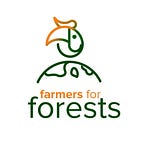We planted 8000 trees and almost killed ourselves and (some of) those trees in the process | Farmers for Forests
There is a reason why the yardstick for success focuses on trees planted, as opposed to trees planted AND their survival rates.
Afforestation, as we have realized, is a tricky business.
You pick a piece of land, which is probably barren and degraded and try to turn it into a thriving forest. A dynamic community replete with tall, dense trees, meandrous vines, thick leafy shrubs and an assortment of diverse creatures from purple bugs to furry squirrels.
Sounds wonderful, right? Turns out it’s quite hard to implement in practice.
Saplings are baby trees and require all of the care, protection and nourishment that any baby of any other species would need. Left out in the open, most are either eaten by goats, trampled on by unsuspecting itinerants, or simply perish due to lack of water and nourishment. So, for any afforestation efforts to be successful, saplings need to be in a fenced environment, protected from animals, and with a reliable source of water and nutrients for the first 2 to 3 years of their life. They also need to be trees that are native and thus well-adapted to the area. Non-native trees are the most susceptible to droughts, pests and other environmental hazards. Plantations in degraded lands require additional and continuous efforts in land restoration through mulching and composting.
All of these things cost a significant amount of money and as a fledgling organization, which is trying to afforest 5 acres and protect another 50 in Year 1 of our operations, our focus has been on being as cost effective as possible. A focus that got us into strange but ultimately instructive situations — from bargaining coyly with pipe vendors to set up an extensive drip irrigation system for our 8000 trees to chasing after oily tree sapling vendors who acquiesced and then stubbornly refused to provide us with the right species of trees (“why would we want to plant Cashew trees in a drought prone district like Ahmednagar in Maharashtra, Mr. Sapling Vendor?”). We’ve done it all!
We’ve been sunburned, bitten by bugs and ended up with calloused palms and aching backs. We even hired a bus to transport our saplings! Turns out MSRTC has modified old buses into luggage carriers and offers the cheapest rates for freight transport. A word to the wise though, MSRTC buses may be cheap (and look good on Instagram) but they are not nimble. They get stuck on every narrow road leading to a sapling nursery and cause major traffic jams that get you angry glares from commuters. And, eventually, you also end up spending a lot more money than you bargained for, because you have to pay for overtime and the bus is really, really slow. But hey, at least you can proudly say, that at some point in your life, you hired an entire MSRTC bus!
Let our travails in afforestation serve as a warning. We must take this seriously and think a thousand times before we destroy a forest (or even stay quiet while one around us is being destroyed). Because it’s back-achingly difficult to grow a forest back! So many of those billions of trees you’ve read about being planted every year probably haven’t even survived.
Please note that we’re not trying to grow forests back because we are habitual forest destroyers. Au contraire, we’re a bunch of neophyte environmentalists trying hard to protect and augment India’s biodiverse forest cover.
However, having said that, if we must be unsparingly honest, we are also definitely a part of a global system that has made it its business to destroy forests. By consuming countless packets of chips, chocolate bars and inexpensive dal makhani, we’ve indirectly contributed to beautiful, heterogenous forests being replaced by dreary, monotonous palm oil plantations. Now couple this with our somewhat gluttonous consumption of factory output (hello iphone) or highways (road trip!) and we might just have got ourselves a seat at the table of the Diamond Club of forest exterminators (oh hey there Bolsnaro, that tie looks mighty good on you).
Hyperbole aside, for decades, we humans as a whole have prioritized development over environment. We just can’t afford to do that anymore.
The consequences are devastating. Climate change induced extreme weather events, a possible preponderance of pandemics, the mass extinction of species, a large scale loss of livelihoods and so on. The list reads like a veritable Who’s Who of Horrors. But this awareness also comes with a feeling of helplessness and climate melancholy. When carbon is being emitted on a global scale and forest area the size of the UK is being destroyed every year and when giraffes are dying, what can we as mere individuals do?
Well, something, at least something. Adding 2.2 billion acres of forests might capture 2/3rds of all human emitted carbon. That’s technically less than 0.3 acres of forest per person on the planet to plant and take care of, not such an unattainable goal.
Take care of being the operative phrase here.What is the point of planting a billion trees if only a handful of them are going to survive?
So, the next time you pay to plant a tree somewhere, hold that organization accountable. Ask them for more than just a geo-tag. Ask them for regular data on the health and status of your tree. Ask them for satellite indices and ask them if you can visit the plantation site and see your tree(s) in person. With climate change looming on us all like a giant, vile cloud of greenhouse gases, we no longer have the luxury of wasting our time on dud efforts.
-Krutika Ravishankar | Co-Founder, Farmers for Forests
(An edited version of this article was originally published by Down To Earth on 23rd July, 2020)
